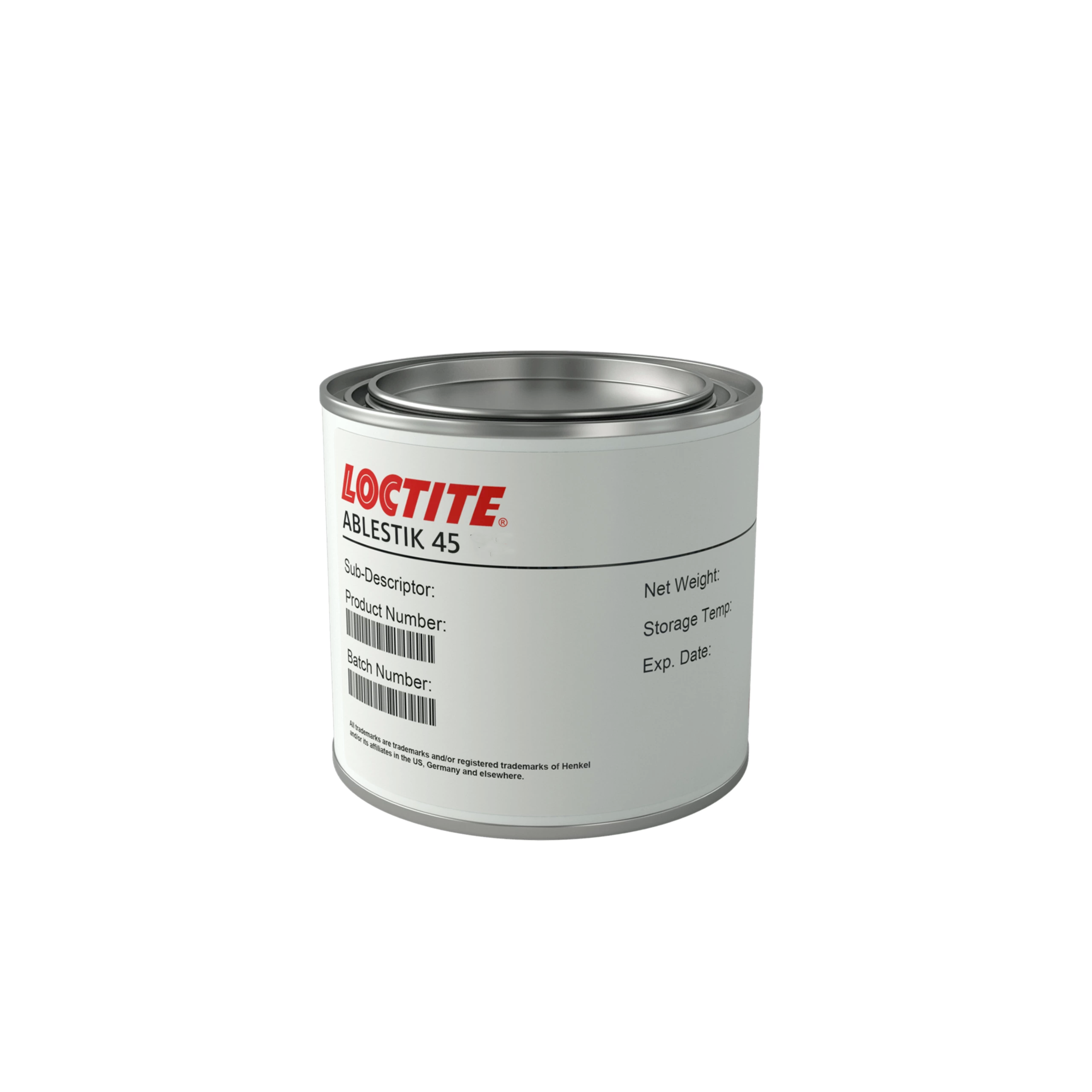LOCTITE ABLESTIK 45 CLEAR
Harmonization Code : 3506.10.00.00 | Prepared glues and other prepared adhesives, not elsewhere specified or included; products suitable for use as glues or adhesives, put up for retail sale as glues or adhesives, not exceeding a net weight of 1 kg
Main features
- Clear Ablestik 45
- Unfilled
- Adjustable flexibility
Product Description
LOCTITE ABLESTIK 45 CLEAR is a clear, unfilled epoxy adhesive which, by varying the amount of catalyst used, can adjust the hardness from flexible to rigid. It has an easy mix ratio and bonds well to a wide variety of substrates. LOCTITE ABLESTIK 45 CLEAR is an unfilled, clear version of ABLESTIK 45.
LOCTITE ABLESTIK 45 CLEAR can be used with a variety of catalysts. For more information on mixed properties when used with other available catalysts, please contact your local technical service representative for assistance and recommendations.
Cure Schedule
- 15 to 30 minutes @ 105°C
- 2 to 4 hours @ 65°C
- 4 to 6 hours @ 45°C
- 16 to 24 hours @ 25°C
Technical Specifications
| General Properties | |||||
| |||||
| Electrical Properties | |||||
| Dielectric Strength Dielectric Strength Dielectric strength is measured in kV per mm and is calculated by the Breakdown voltage divided by the thickness of the tested material. Those two properties go hand in hand and while Breakdown voltage is always thickness dependent, dielectric strength is a general material property. As an example, the dielectric strength of Polyimide is 236 kV/mm. If we place 1mm of Polyimide between two electrodes, it will act as an insulator until the voltage between the electrodes reaches 236 kV. At this point it will start acting as a good conductor, causing sparks, potential punctures and current flow. | 16 kV/mm | ||||
| |||||
| Mechanical Properties | |||||
| |||||
| Physical Properties | |||||
| Viscosity Viscosity Viscosity is a measurement of a fluid’s resistance to flow. Viscosity is commonly measured in centiPoise (cP). One cP is defined as the viscosity of water and all other viscosities are derived from this base. MPa is another common unit with a 1:1 conversion to cP. A product like honey would have a much higher viscosity -around 10,000 cPs- compared to water. As a result, honey would flow much slower out of a tipped glass than water would. The viscosity of a material can be decreased with an increase in temperature in order to better suit an application | 20,000 mPa.s | ||||





